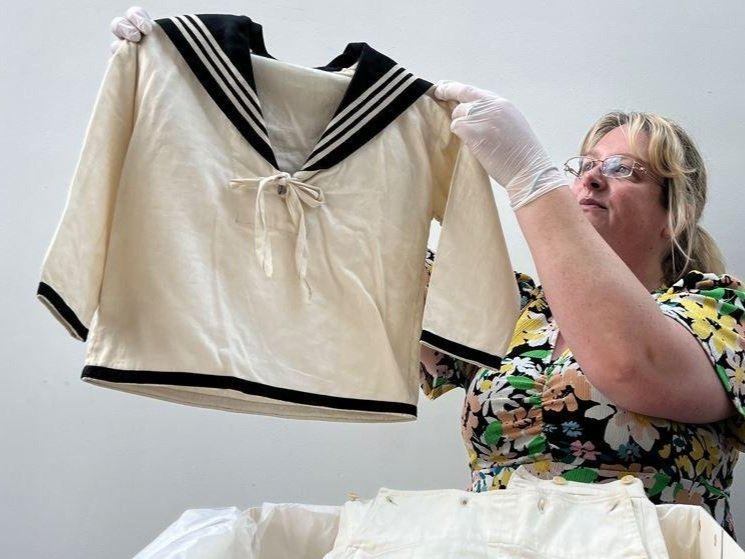Top 5 Rad things to know about STRIPES
When I wash my clothes, it looks like Hamburglar’s laundry day. I’m obsessed with stripes — vertical, horizontal, black, white, socks, underwear…it’s better with stripes!
Stripes evoke power and style for me and I wanted to dig into why stripes persevere, why they evoke so many varied images, and why people love wearing them!
5) Stripes are ancient
Woven cloth goes back as early as 7000BC. One of the earliest patterns is stripes, made by alternating coloured threads. Examples of striped textiles date back to 3650 BC —the Neolithic period. Old!
Two women, weaving linen at a horizonal loom.
4) Stripes are the “devils cloth”
“You will not wear upon yourself a garment that is made of two” Leviticus 19:19
This scripture was interpreted to forbid garments made of two contrasting colours. From the 13th through 15th centuries, only social outcasts wore stripes: lepers, heretics, inmates, court jesters, cripples, musicians, prostitutes, and other people of low reputation. In 1310, a French cobbler was put to death after being caught wearing stripes. They were associated with shame for a long time. Think of the Johnny Cash song I Got Stripes:
“I got stripes, stripes around my shoulders
And them chains, them chains,
They’re about to drag me down”
Social outcasts, medieval Europe
3) Stripes are easy to spot
The striped Breton top originally worn by fishermen became the official uniform of French Sailors in 1858. It had 21 stripes to symbolize each of Napoleon’s victories. The blue and white stripes made it easier to spot a sailor if he fell overboard.
The notorious striped prison uniforms, originating in the Auburn Prison System in New York in the 1820s, were instituted in order to "break prisoners psychologically as well as physically." They were designed to symbolize prison bars and discouraged escape, as prisoners would be easy to distinguish from non-criminals. This prison system also included complete silence at all times, work all day, solitary confinement at night, and moving arm in arm in “lockstep”.
Training of officers and cadets of a french ship on the Thames, England, London, 1935
2) Stripes get a makeover
The flag designed for the American Revolution in 1783 included 13 red and white stripes to demonstrate the 13 British colonies that fought for freedom from England’s power.
Then in 1846, Queen Victoria had her 4 year old son Albert dressed in a striped sailor suit to board the Royal Yacht and it sparked a massive trend. Stripes took on a youthful, playful meaning.
In 1917, Coco Chanel released a nautical collection, inspired by those Breton Sailors bringing stripes into daywear for the elevated mainstream.
Prince Albert’s actual sailor top from 1846.
1) Stripes are chic, deviant, and cool
The Breton top was adopted by high society and popularized by celebrities like Pablo Picasso, Audrey Hepburn, Marilyn Monroe and Brigitte Bardot.
The social outcast notion evolved, morphed, and was adopted into beatnik, hippie, and punk counterculture aesthetic. Blondie, The Ramones, Kurt Cobain, Elvis Presley, James Dean, Andy Warhol, and David Bowie have all been famously photographed wearing stripes. And don’t forget Dennis the Menace, Bert and Ernie, Beetlejuice, the Wicked Witch from The Wizard of Oz, Freddy Kreuger, and Pippi Longstocking.
Kate Middleton, Audrey Hepburn, Alexa Chung and Kurt Cobain wearing stripes.
“Don’t think about making art. Just get it done. Let everyone else decide if it’s good or bad, whether they love it or hate it. While they are deciding, make even more art.”





